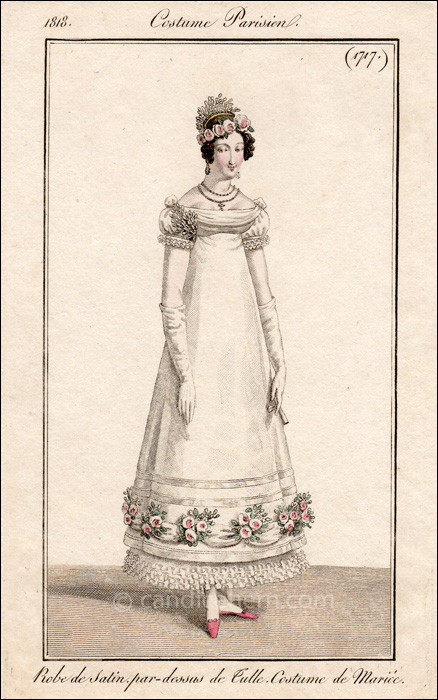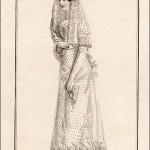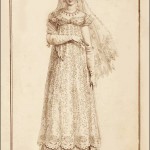Journal de Dames et des Modes, March 15, 1818.
“Robe de Satin, par-dessus de Tulle. Costume de Mariée.”
The style of dress and the jewelry suggest an evening full dress, once again demonstrating the shift from a pretty day dress and bonnet to more formal wear for brides, even when the wedding was in the morning.
Here we see another example of the use of wheat and roses in the ornamentation of a wedding dress. (See other examples here and here.) The prevalence of wearing grain sprigs evokes an ancient wedding custom of the bride carrying three wheat ears as a symbol of plenty. Wheat could also be a symbol of fertility.
The dress is not described in the magazine (they seldom were), but the brief description beneath the print tells us it is a satin dress with a tulle overdress. Swags of ribbons and rose-wheat bouquets adorn the hem of the overdress. The underdress includes several rows of small ruched ruffles, which are repeated on the bottom of the sleeves. A sprig of wheat is attached to her right sleeve.
A corona of pink roses circles her head, and what looks to be a comb with sprigs of wheat is attached behind. The bold pink slippers provide a bright spot of color.








